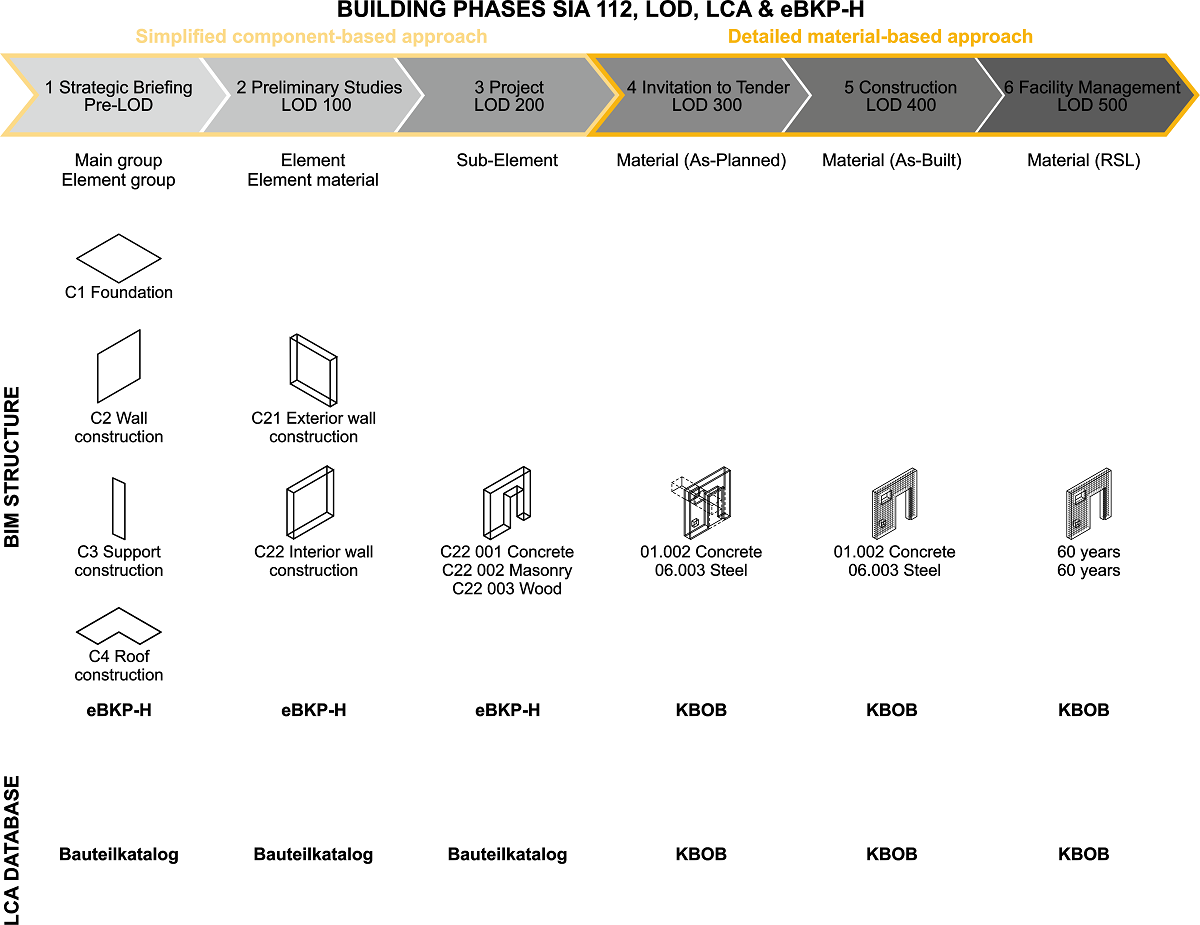The building sector has a big potential to reduce the material resource demand needed for building construction and therefore, greenhouse gas (GHG) emissions. Digitalisation can help to make use of this potential and improve sustainability throughout the entire building’s life cycle. One way to address this potential is through the integration of Life-Cycle Assessment (LCA) into the building process by employing Building Information Modelling (BIM). BIM can reduce the effort needed to carry out an LCA and therefore facilitate the integration into the building process. A review of current industry practice and scientific literature shows two main approaches to address BIM-LCA integration. Either the LCA is performed in a simplified way at the beginning of the building process, or it is done at the very end when all the needed information is available, but it is too late for decision-making. One reason for this is the lack of methods, workflows and tools to implement BIM-LCA integration over the entire building process. Therefore, the main objective of this study is to develop an integrated BIM-LCA workflow implemented into a method for the whole building process using an existing structure for cost estimation. A tool is created and used in a case study in Switzerland to test the developed approach. The results of this study show that LCA can be performed continuously in each building phase over the entire building process using existing BIM modelling techniques. The main benefit of this approach is that the re-work caused by the need for re-entering data and the usage of many different software tools that characterise most of the current LCA practices is minimised. Furthermore, decision-making, both at the element and building levels, is supported.

